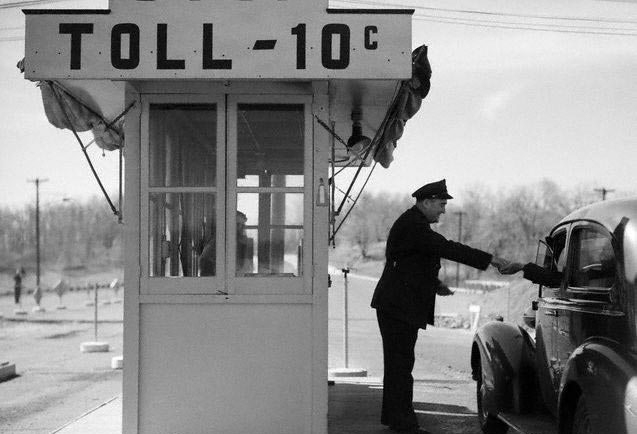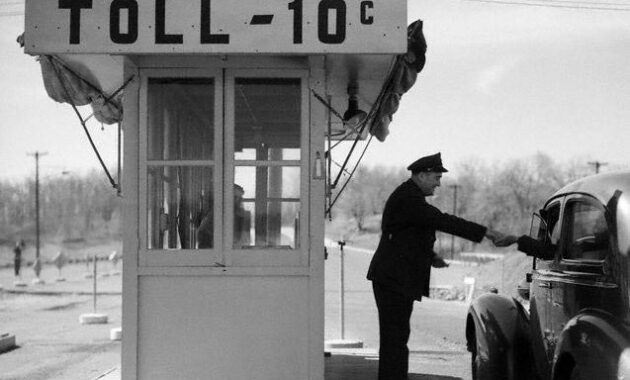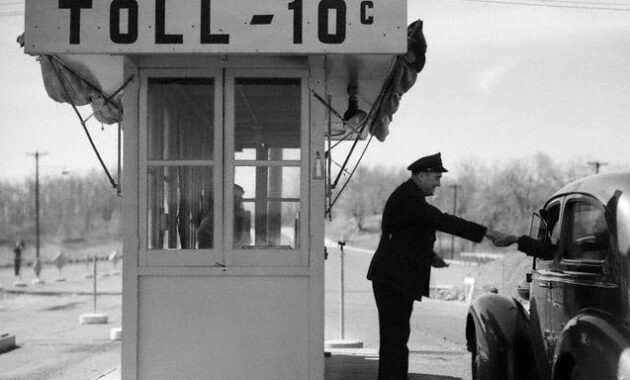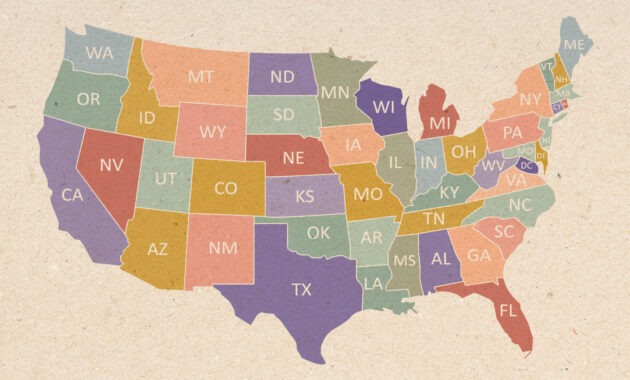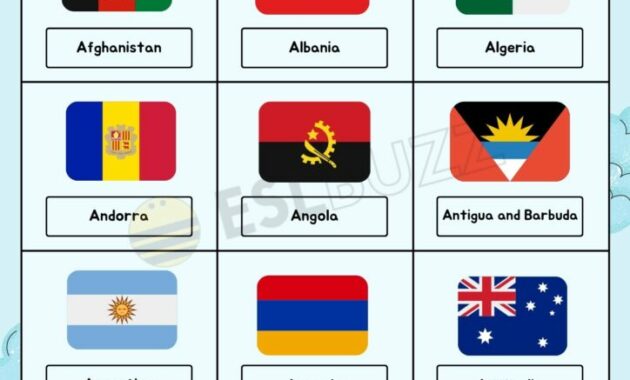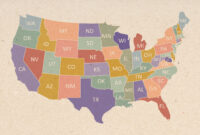Navigating toll roads can be a source of anxiety for travelers, whether they’re embarking on a cross-country road trip or simply commuting within a city. Understanding the ins and outs of toll systems, payment methods, and potential costs is crucial for a smooth and budget-friendly journey. This guide aims to provide a comprehensive overview of toll roads, covering essential aspects such as identifying toll roads, payment options, electronic toll collection, potential pitfalls, and best practices for planning toll-road travel.
Toll Roads: What You Need to Know – Visit USA Parks

In the United States, toll roads are a common feature, particularly in the eastern and southern states. These roads are typically built and maintained by state or local authorities, and tolls are charged to recover construction and maintenance costs. Identifying toll roads is usually straightforward, as they are clearly marked with signs indicating the presence of tolls. These signs often display the toll amount or the method of payment accepted. However, it’s always a good practice to research your route beforehand using online mapping tools or navigation apps, which can identify toll roads and estimate toll costs. Ignoring these signs can lead to unexpected charges and potentially hefty fines.
Several methods are used for paying tolls in the US, including cash, electronic toll collection (ETC), and video tolling. Cash payment is the most traditional method, but it’s becoming less common as many toll roads transition to all-electronic systems. Electronic toll collection systems, such as E-ZPass, SunPass, and FasTrak, allow drivers to pay tolls electronically using a transponder affixed to their vehicle. These systems typically offer discounted toll rates and can save time by allowing drivers to pass through toll plazas without stopping. Video tolling involves capturing an image of the vehicle’s license plate and sending a bill to the registered owner. While convenient, video tolling often incurs higher fees compared to electronic toll collection.
Electronic toll collection (ETC) systems are prevalent throughout the United States, offering a seamless and efficient way to pay tolls. These systems use radio frequency identification (RFID) technology to communicate with toll readers as a vehicle passes through a toll plaza. A transponder, typically mounted on the windshield, transmits a unique identification number to the toll reader, which then debits the toll amount from the driver’s prepaid account. ETC systems are generally interoperable within a region, allowing drivers to use the same transponder on multiple toll roads. For example, E-ZPass is accepted in multiple states across the East Coast. Obtaining an ETC transponder is usually a simple process, involving creating an account with the toll authority and paying a small fee for the transponder. The benefits of using an ETC system include discounted toll rates, faster travel times, and the convenience of automatic payment.
Several potential pitfalls can arise when navigating toll roads, including missed tolls, incorrect payment methods, and unexpected charges. Missed tolls can occur when drivers inadvertently pass through a toll plaza without paying, either due to confusion or lack of awareness. Many toll authorities offer grace periods for missed tolls, allowing drivers to pay online or by mail within a specified timeframe. However, failing to pay a missed toll can result in late fees and penalties. Incorrect payment methods can also lead to issues, such as attempting to pay with cash at an all-electronic toll plaza. In these cases, drivers may be subject to video tolling or fines. Unexpected charges can occur when drivers are unfamiliar with the toll rates or payment policies of a particular toll road. To avoid these pitfalls, it’s essential to research your route beforehand, understand the payment options available, and ensure you have sufficient funds in your ETC account.
Planning ahead is crucial for a successful toll-road journey. Start by researching your route using online mapping tools or navigation apps, which can identify toll roads and estimate toll costs. These tools also provide information on payment options, such as cash, ETC, or video tolling. If you plan on using electronic toll collection, ensure you have a compatible transponder and that your account is in good standing. Check the toll rates for each toll road on your route, as these can vary depending on the time of day, vehicle type, and distance traveled. Factor in potential toll costs when budgeting for your trip. Consider alternative routes that may avoid toll roads, especially if you’re looking to save money or prefer a more scenic drive. However, be aware that alternative routes may be longer and more time-consuming. Finally, allow extra time for potential delays at toll plazas, especially during peak travel periods.
Toll Roads in European Countries

The European landscape of toll roads presents a varied system, with each country employing its own unique methods for charging and collecting tolls. Unlike the relatively standardized systems in the United States, navigating European toll roads requires a country-specific understanding to avoid fines and ensure a smooth journey. Many European countries, particularly in Western and Southern Europe, rely heavily on toll roads as a primary source of funding for highway construction and maintenance. These toll roads are often well-maintained and offer efficient routes, making them attractive options for travelers. However, the cost of using these roads can add up, so careful planning is essential.
Payment methods across Europe vary widely. Some countries, like France, Italy, and Spain, primarily use a distance-based tolling system where drivers pay based on the length of the road they travel. Tolls are typically collected at toll booths along the highway, accepting cash, credit cards, and sometimes electronic toll tags. Other countries, like Austria, Switzerland, and Slovenia, use a vignette system, requiring drivers to purchase a sticker (vignette) that must be affixed to the windshield. The vignette is valid for a specific period, such as a week, a month, or a year, and allows unlimited use of the toll roads within that period. Failure to display a valid vignette can result in substantial fines. In some countries, such as Germany and Belgium, tolls are primarily levied on heavy goods vehicles (HGVs), while passenger cars can use the highways free of charge. However, Germany is gradually introducing tolls for passenger cars on certain sections of its Autobahn network.
Electronic toll collection (ETC) systems are becoming increasingly popular in Europe, offering a convenient alternative to cash and vignettes. These systems use transponders or on-board units (OBUs) to automatically deduct tolls from a driver’s account. Some ETC systems are interoperable across multiple countries, allowing drivers to use the same device on different toll roads. For example, the Telepass system is widely used in Italy, France, Spain, and Portugal. However, interoperability is not universal, so it’s essential to check the compatibility of your ETC device before traveling to different countries. Several providers offer ETC solutions for European toll roads, catering to both residents and tourists. These providers typically offer different subscription plans and payment options, allowing drivers to choose the best option for their needs.
Potential pitfalls when navigating European toll roads include incorrect vignette placement, failure to pay tolls, and driving in low-emission zones without the required permits. Incorrect vignette placement can result in fines, even if the vignette is valid. It’s essential to follow the instructions provided by the toll authority and affix the vignette correctly to the windshield. Failure to pay tolls, either by intentionally avoiding toll booths or by using an invalid payment method, can lead to substantial fines and even legal repercussions. Many European countries have strict enforcement policies and use cameras to identify vehicles that have not paid tolls. Driving in low-emission zones (LEZs) without the required permits can also result in fines. LEZs are areas in cities that restrict access to vehicles that do not meet certain emission standards. Before driving in a European city, it’s essential to check whether it has an LEZ and obtain the necessary permits.
Planning a toll-road journey in Europe requires careful research and preparation. Start by identifying the toll roads you will be using and the payment methods accepted in each country. If you plan on using vignettes, purchase them in advance from authorized retailers or online. Ensure you affix the vignette correctly to your windshield according to the instructions. If you plan on using electronic toll collection, check the compatibility of your device with the toll roads you will be using and ensure your account is in good standing. Consider purchasing a multi-country ETC device if you plan on traveling to multiple countries. Familiarize yourself with the toll rates and payment policies in each country. Factor in potential toll costs when budgeting for your trip. Be aware of low-emission zones in cities and obtain the necessary permits if required. Finally, allow extra time for potential delays at toll booths, especially during peak travel periods. By planning ahead and being prepared, you can ensure a smooth and enjoyable toll-road journey in Europe.
In conclusion, whether navigating toll roads in the United States or Europe, a thorough understanding of the local systems, payment methods, and potential pitfalls is crucial. By planning ahead, researching your route, and choosing the most appropriate payment option, you can minimize stress and ensure a smooth, cost-effective, and enjoyable travel experience. Embracing technology through electronic toll collection can significantly streamline the process, while awareness of local regulations will prevent unexpected fines and delays. Ultimately, informed preparation is the key to successfully navigating the complexities of toll roads around the world.
If you are looking for Toll Roads: What You Need to Know – Visit USA Parks you’ve came to the right page. We have 5 Pictures about Toll Roads: What You Need to Know – Visit USA Parks like Toll Roads: What You Need to Know – Visit USA Parks, Russian-Chinese Offers to Invest in Toll Roads – The Syrian Observer and also Toll Roads: What You Need to Know – Visit USA Parks. Here it is:
Toll Roads: What You Need To Know – Visit USA Parks

visitusaparks.com
Why Sell Toll Roads To Foreign Companies?

slate.com
Toll Roads In Europe • Autotraveler.ru
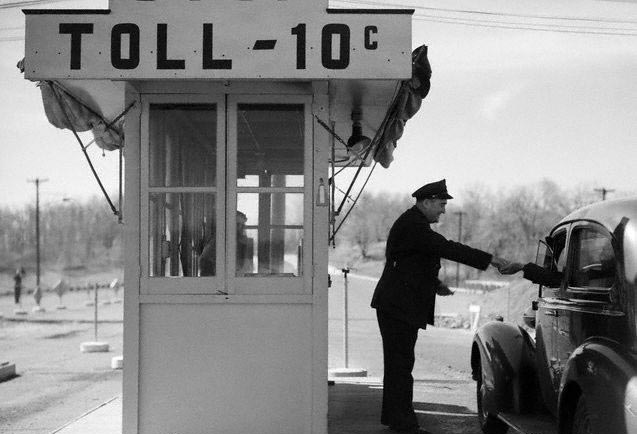
autotraveler.ru
ru toll roads europe
Toll Roads In European Countries

www.goboony.com
toll roads europe european
Russian-Chinese Offers To Invest In Toll Roads – The Syrian Observer

syrianobserver.com
Toll roads europe european. Toll roads in european countries. Why sell toll roads to foreign companies?

